by Jim Isermann, Precision Conservation Management and Illinois Sustainable Ag Partnership
by Abigail Peterson, Illinois Soybean Association Director of Agronomy
Across the board, the harvest season for 2022 was a successful one. Most farmers were happy with both their corn and soybean yields and although some had delays and challenges through the fall, most areas progressed very quickly during harvest. There were many opportunities for timely planting of cover crops, though farmers continue to cope with the need to contribute labor and equipment for seeding cover crops at a busy time of year. Ideal planting dates for covers to be planted can be broad, around September to November for hardy winter grasses like cereal rye and barley. Dry conditions in many part of the state delayed cover crop emergence after seeding, leading some farmers to be disappointed in fall growth even with earlier seeding dates. Overwintering and stands on these fields will be interesting to track come springtime.
Across the countryside, interest in conservation practices (cover crops, reduced tillage, nutrient management) have been discussed as more opportunities for programs within the non-profit, government and industry sector as they have pushed their incentive programs. "Regenerative, soil health and carbon programs" are popping up everywhere, building a frustration to navigating rules and contracts within the sustainable agriculture space. U of IL extension, IL Corn and Soybean Checkoff and the Illinois Sustainable Ag Partnership are some of the non-biased based information sources to investigate the carbon credit/conservation service questions you have.
Photos from Peterson Harvest 2022:
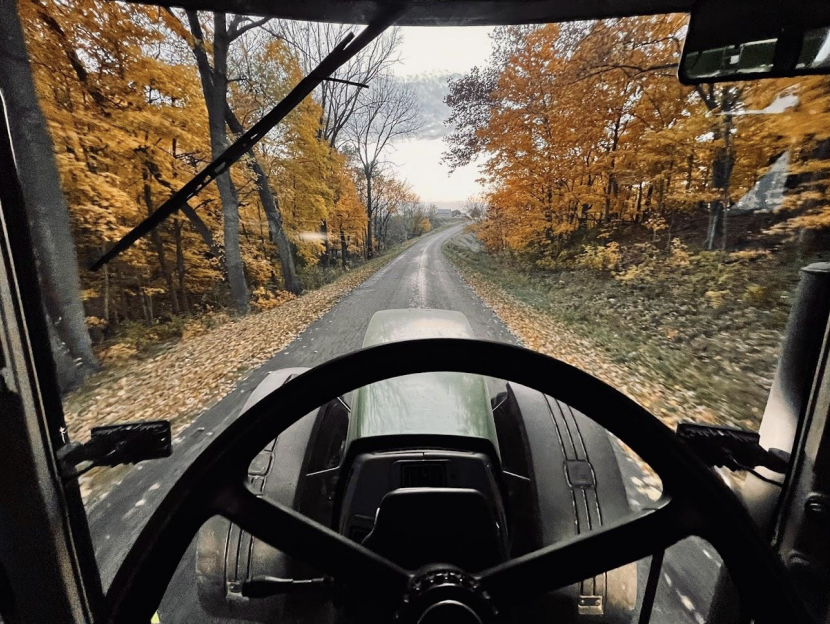


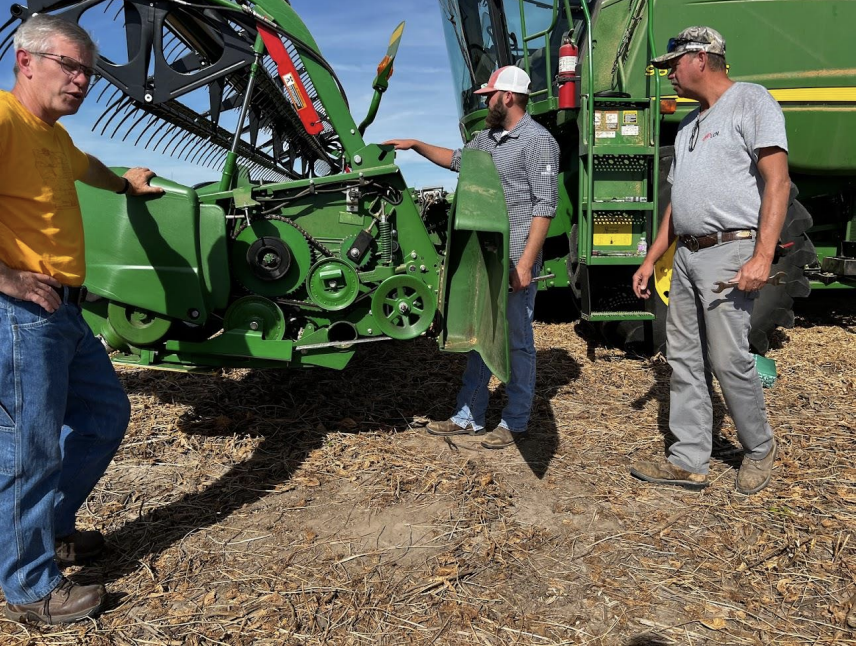
Like every year we see a multitude of ways to get cover crops planted. Depending on the fall moisture, soil temperatures, and cover crop application, stands can shine one year with one method and not the next. Drilling cover crops with good seed to soil contact and surface area coverage usually sets the stage for consistent stands. Other methods include using a 15" or 30" row planter with small seed plates, using an air seeder with light tillage attachments, or even applying the cover with the combine via corn head attachment. Less consistent methods include aerial, drone, or other broadcasting methods with or without incorporation. Farmers must find the balance between getting the best stand for their goals, and getting the job done in a short window that already has huge demands on their time and equipment.
This year we saw (see below) a successful aerial application of 30 lbs oats and 5 lbs radish. This is a great example of winter kill cover crops being used ahead of a corn crop the following spring. The application was made the second week of September. Farmer noted the seed germinated 5 days post application. Some may be disappointed by the pencil width size of the radishes in this example due to so many pictures of large "ankle breakers" that get circulated of radishes, but this is worthwhile stand of a winterkill cover crop and a good, beneficial amount of growth.

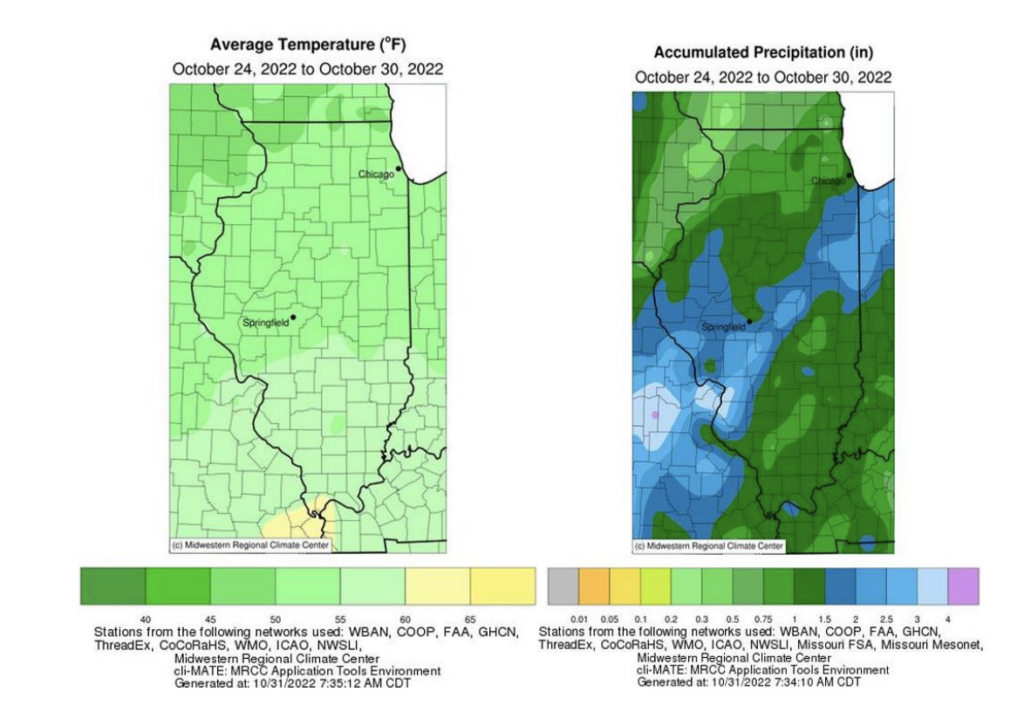
Average temperatures and precipitation across the state were ideal for covers planted late September. (MAP – NASS/USDA)
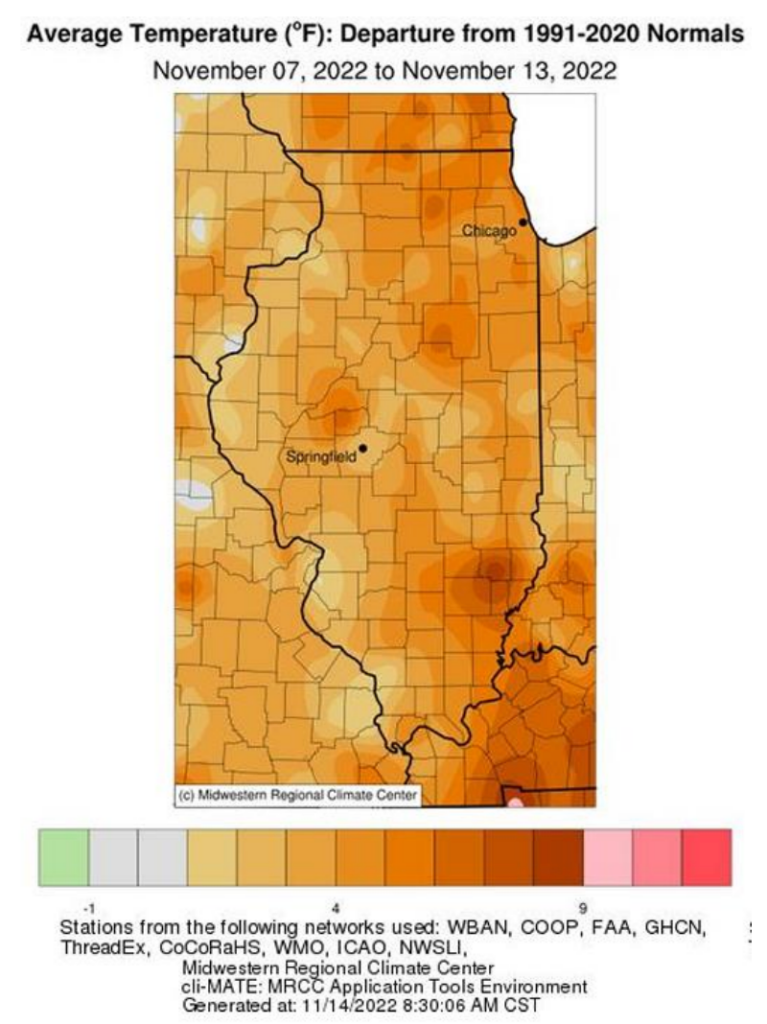
Warmer temperatures were observed from Nov. 7- 13 than previous years. (MAP – NASS / USDA)
Cover Crop Planting:

October 22, 2022 – 15" Row drill in Vermillion County
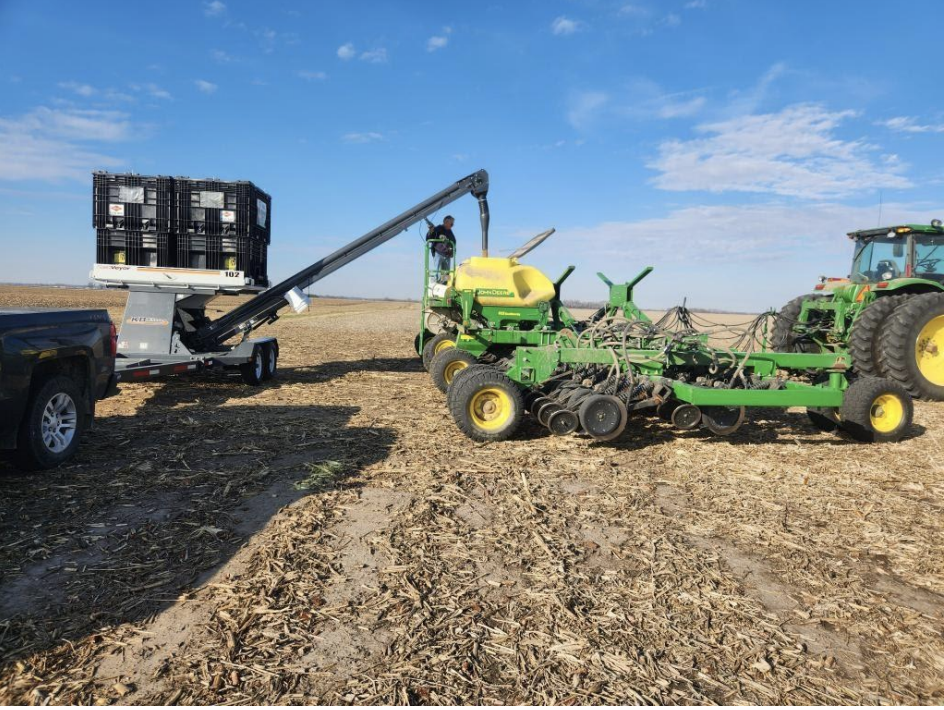
November 9, 2022 – Air Seeder in Shelby County
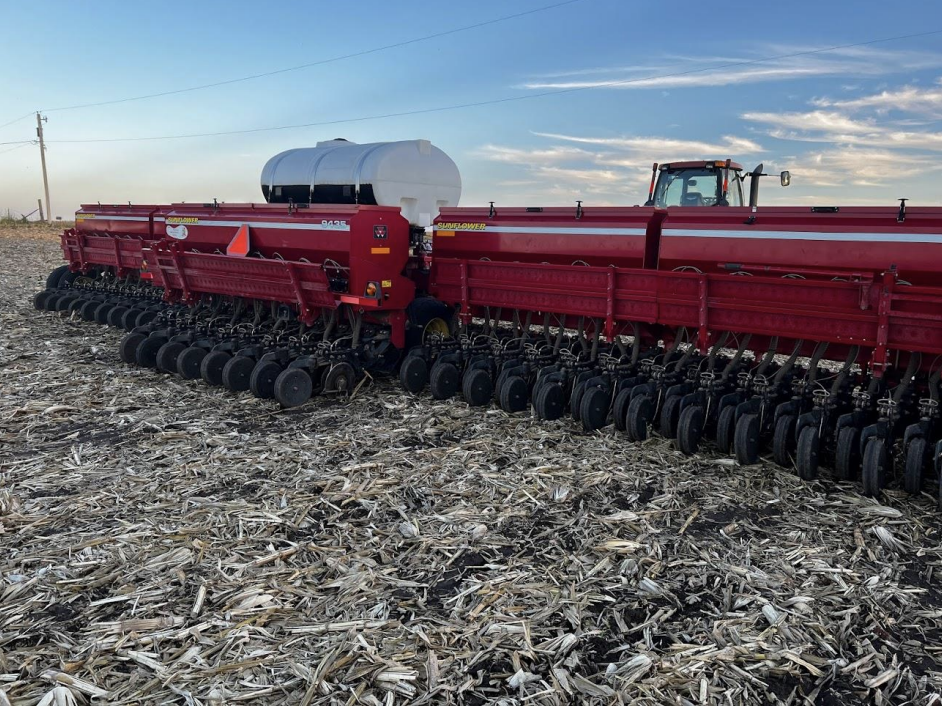
September 18, 2022: 7.5" Drill in Putnam County
Putnam County Planting Example:
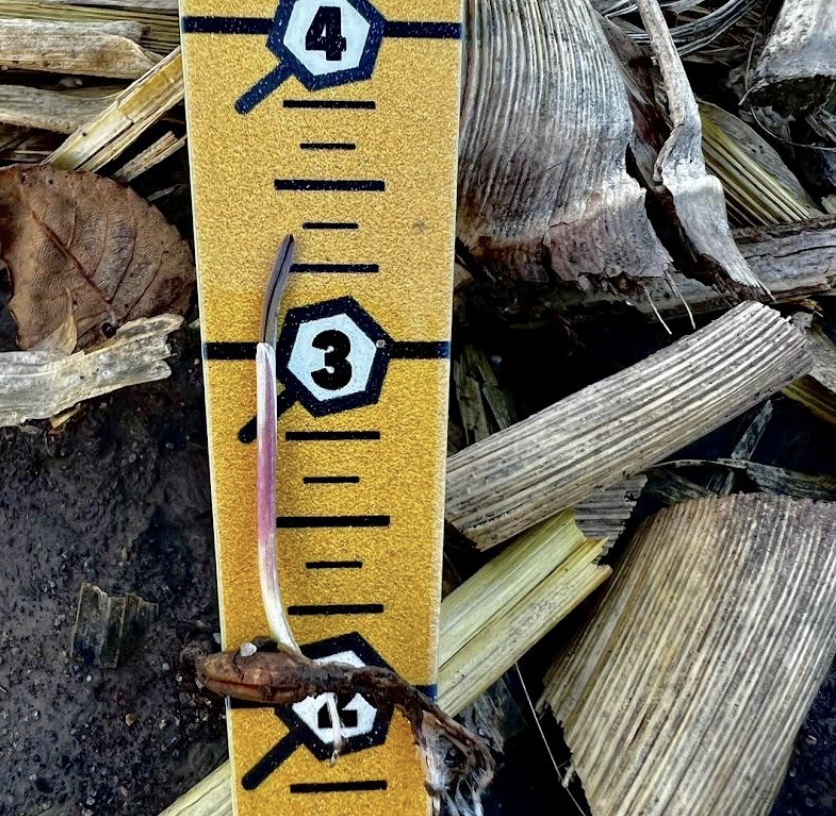
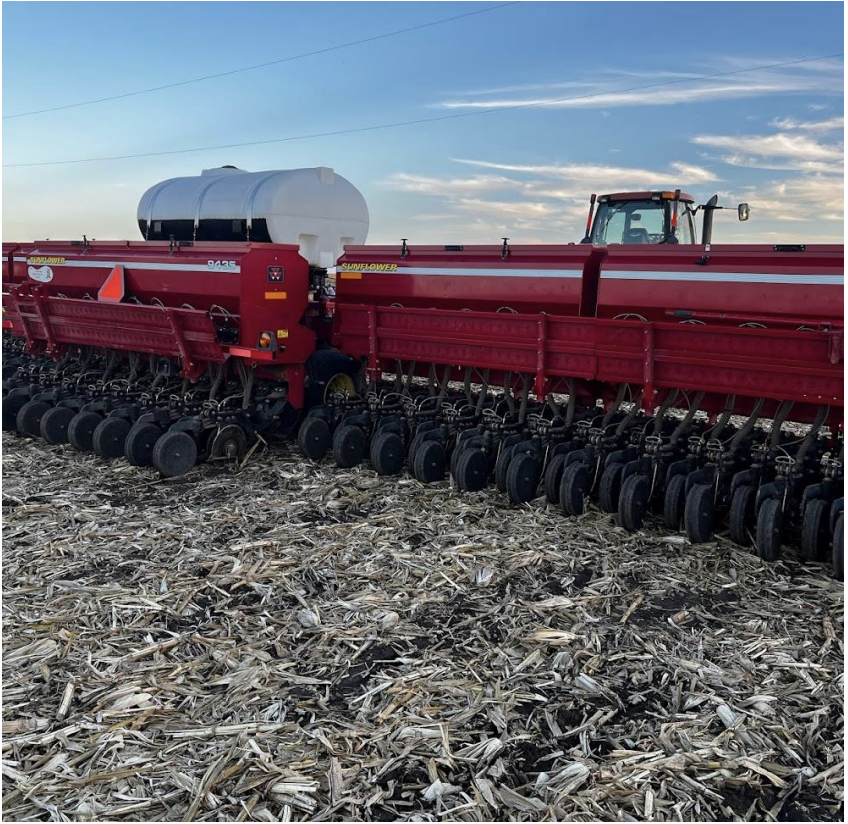
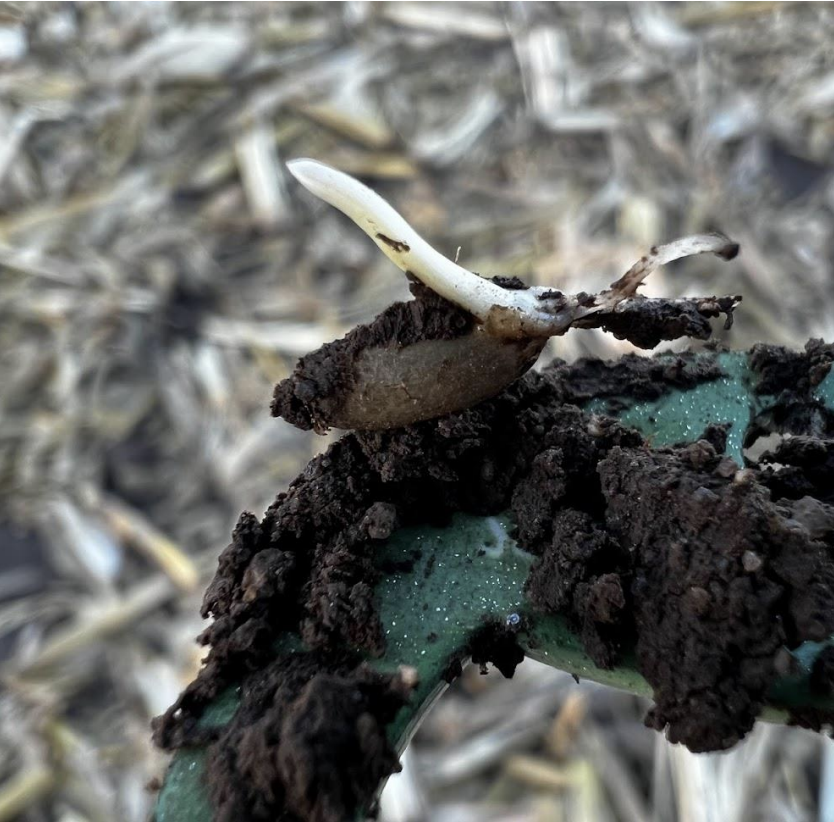
The field was planted with cereal rye on September 18, 2022. The pictures shown above were taken on September 19, 2022. Germination was within 24 hours. Field was corn going to beans. This field is a great example of dedicating time to planting early can lead to great fall biomass growth.
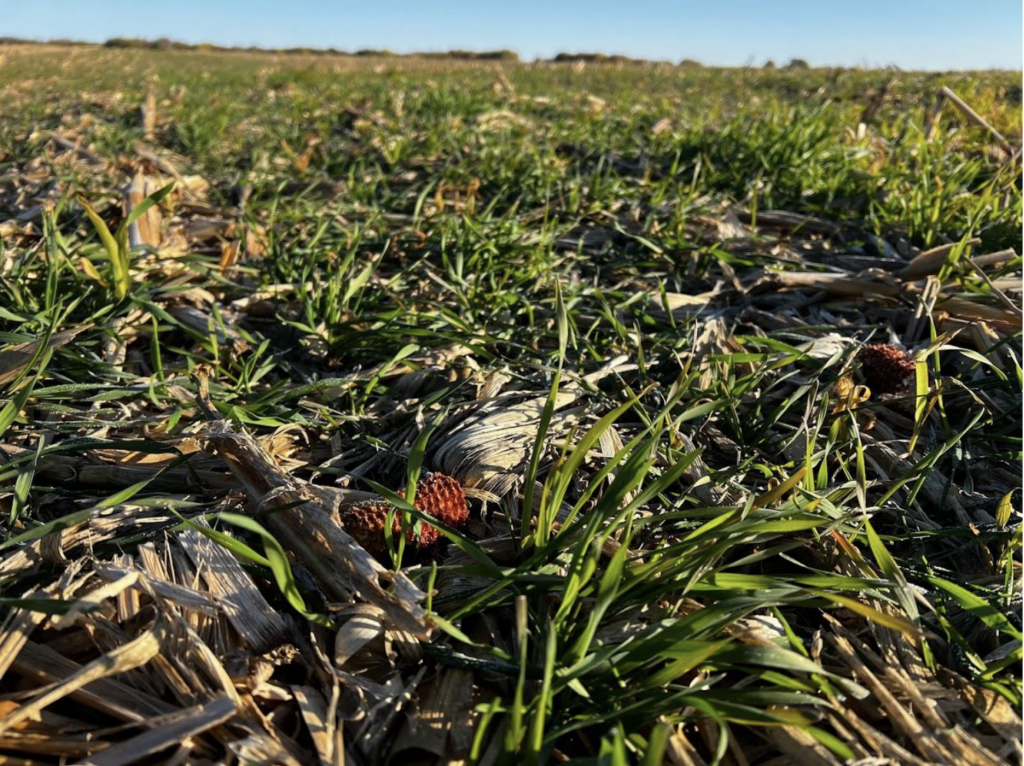
Growth on October 19, 2022 – Putnam County
The photos below from Putnam County on December 8th show 9'' of growth. While the seeding population here was low, the early seeding date and good fall weather helped to produce an average of 26 tillers per plant. The ability of grasses to tiller under certain conditions (earlier seeding date and lower populations) can result in a tremendous ability to compensate and produce more biomass. This leads many farmers to increase seeding rates as the calendar date gets later, knowing they cannot count as much on fall tillering to provide additional biomass. Strips were made this fall. This will be a soybean strip till field. Farmer noticed great success last year with strip tillage and soybean growth. With the desire of many farmers to plant soybeans earlier, many are experimenting with strategies such as strip till with cover crops to provide ideal planting conditions earlier in the spring.
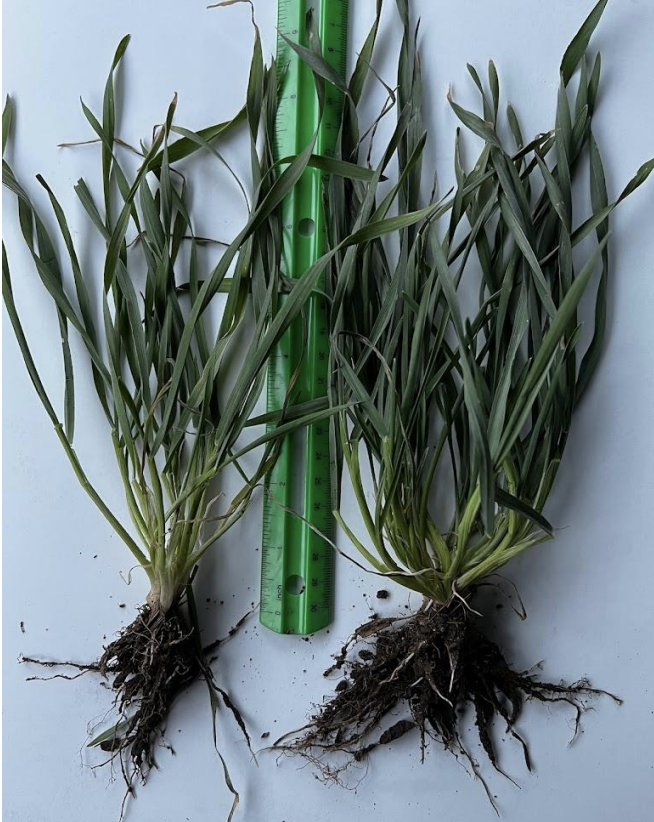
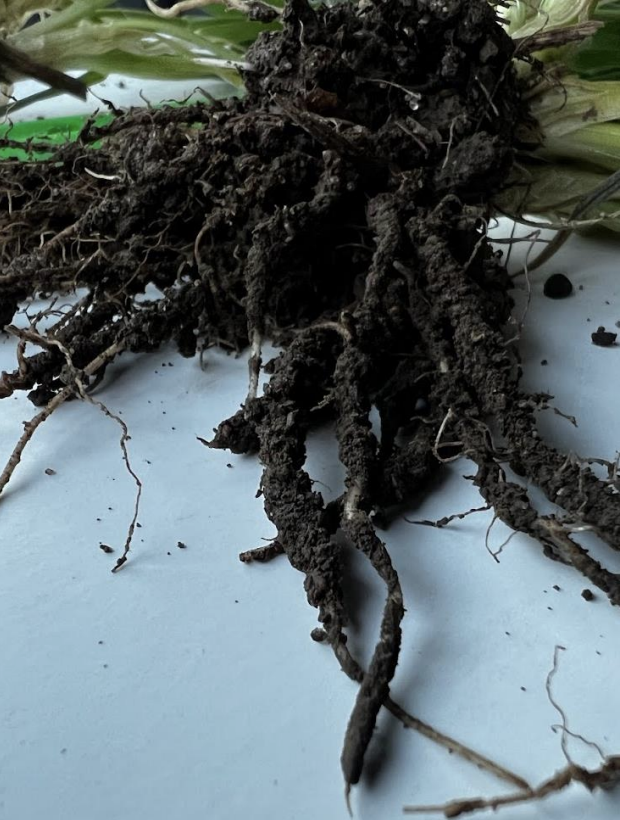
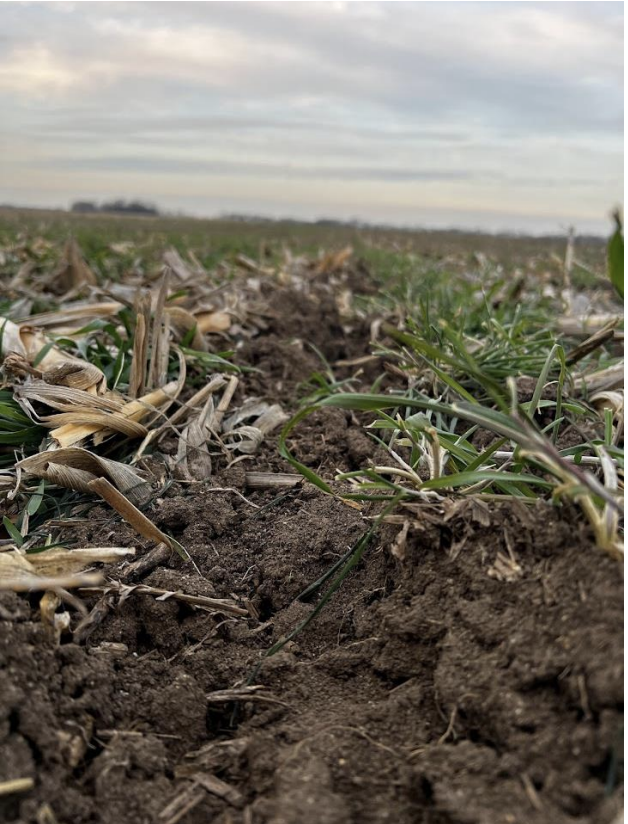
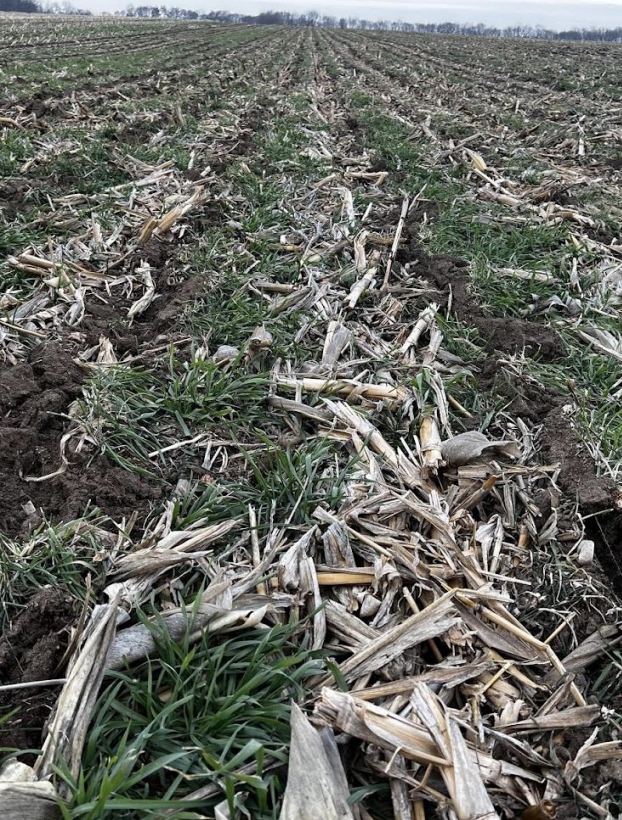
Vermillion County Planting Example:
On some first-year trials, we get the exciting challenge of starting the rotation with corn. Usually, we like a soft launch into a soybean crop with a reliable cereal rye stand with many options to terminate. This farmer will be starting his trial with a cover crop ahead of corn crop in spring of 2023 but has both the resources and interest that trying an overwintering grass cover crop can be successful. The primary concerns will be timely termination, avoiding direct competition from the cover crop with the corn, and nitrogen management. This farmer has the ability to spray his own herbicides, helping to ensure timely termination of the cover crop. He will be aiming to terminate when the cover crop is around 3 to 6 inches in the spring. He also has chosen to go with barley as his cover crop, reducing the potential for excessive, unwanted growth in the spring (vs. cereal rye) and has taken the step of strip tilling the field after cover crop application ensuring a good, warm seed bed with no cover crop to interfere in the strip to get the corn crop off to a good start next spring. In addition, he has a nitrogen management plan that will ensure plenty of available, upfront nitrogen to the corn crop to give it a successful start in spring of 2023.
While many may feel terminating a cover crop at this early growth stage may reduce the benefits, it is important to note that ahead of a corn crop there are risks for nitrogen tie up when using overwintering grass cover crops. It is important that farmers begin to understand the biology in their soil, how nitrogen cycles, and how carbon to nitrogen ratios of cover crops can affect biological activity and nutrient tie up. Always remember soils transition over time to be more biologically active, and farmers in advanced soil health systems may be able to push to later termination dates without potential negative consequences.
To learn more about Carbon to Nitrogen Ratios, click on this link.
We are excited to follow this field and see what biomass and planting conditions will be this spring!

October 22, 2022: 15" Row drill in Vermilion County
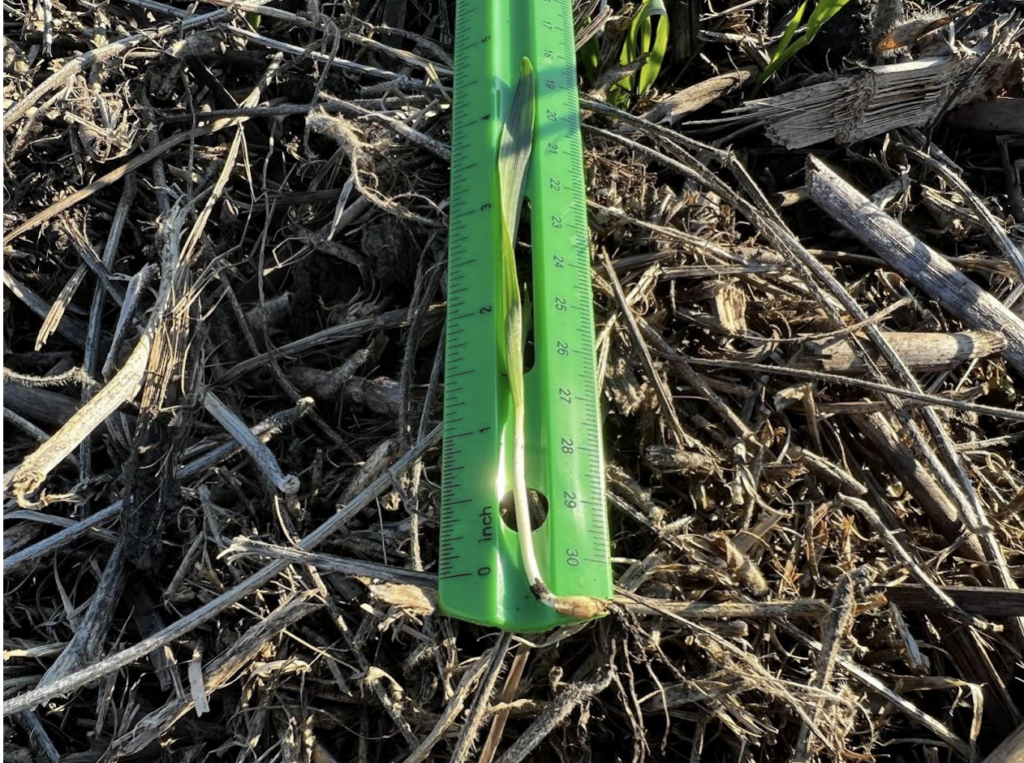
November 9, 2022 – Barley field in Vermillion County
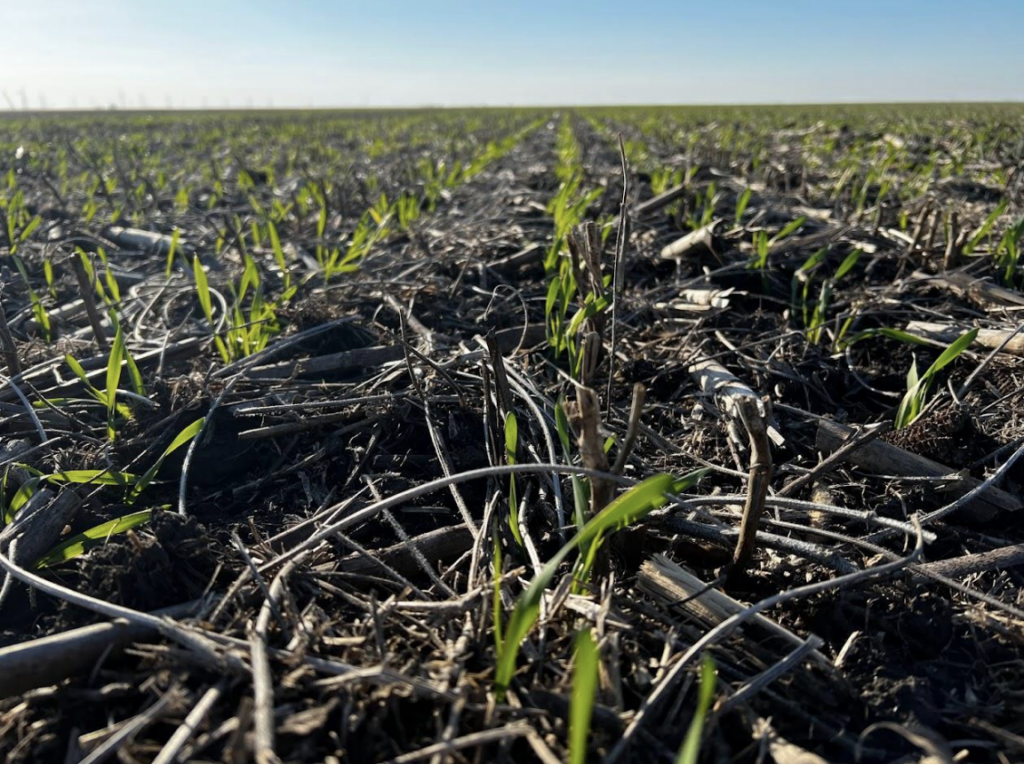
November 9, 2022 – Barley field in Vermillion County
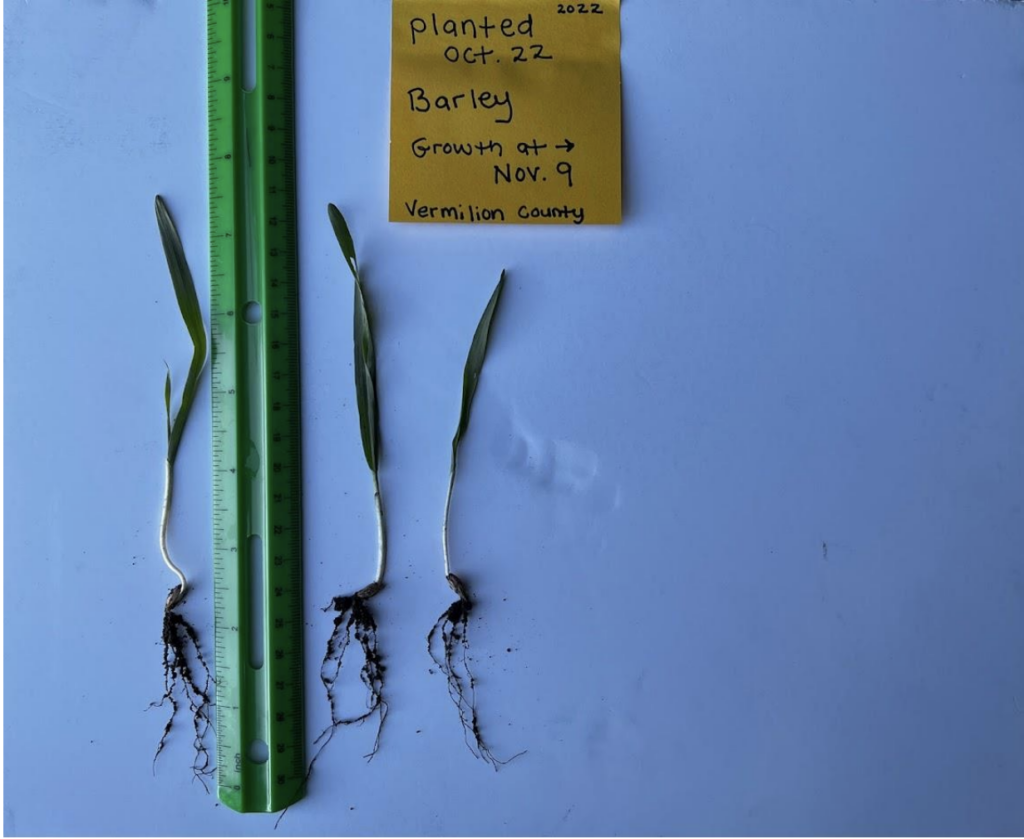
November 9, 2022 – Barley field in Vermillion County
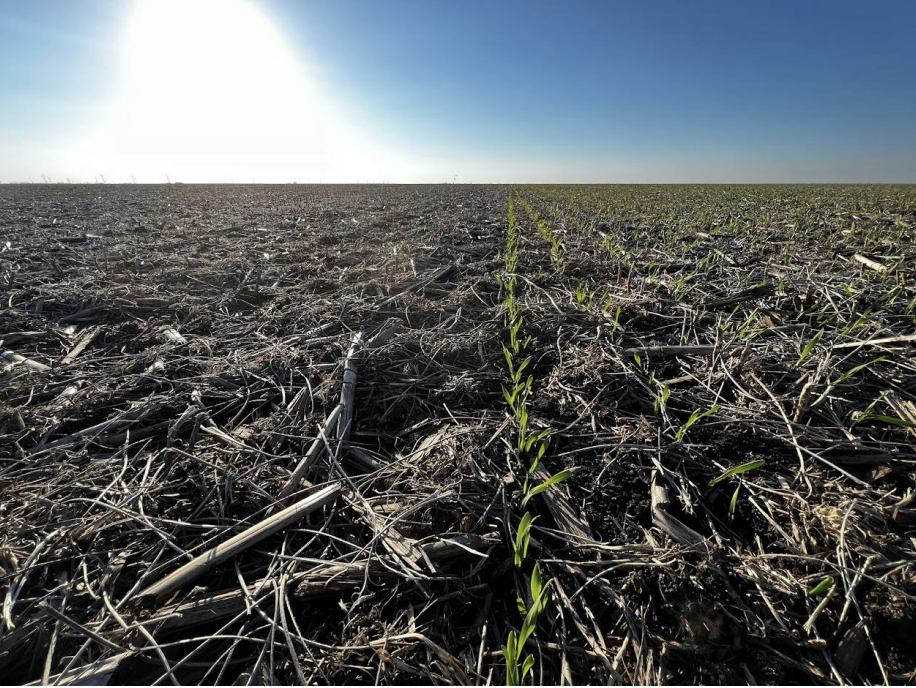
November 9, 2022 – Barley field in Vermillion County
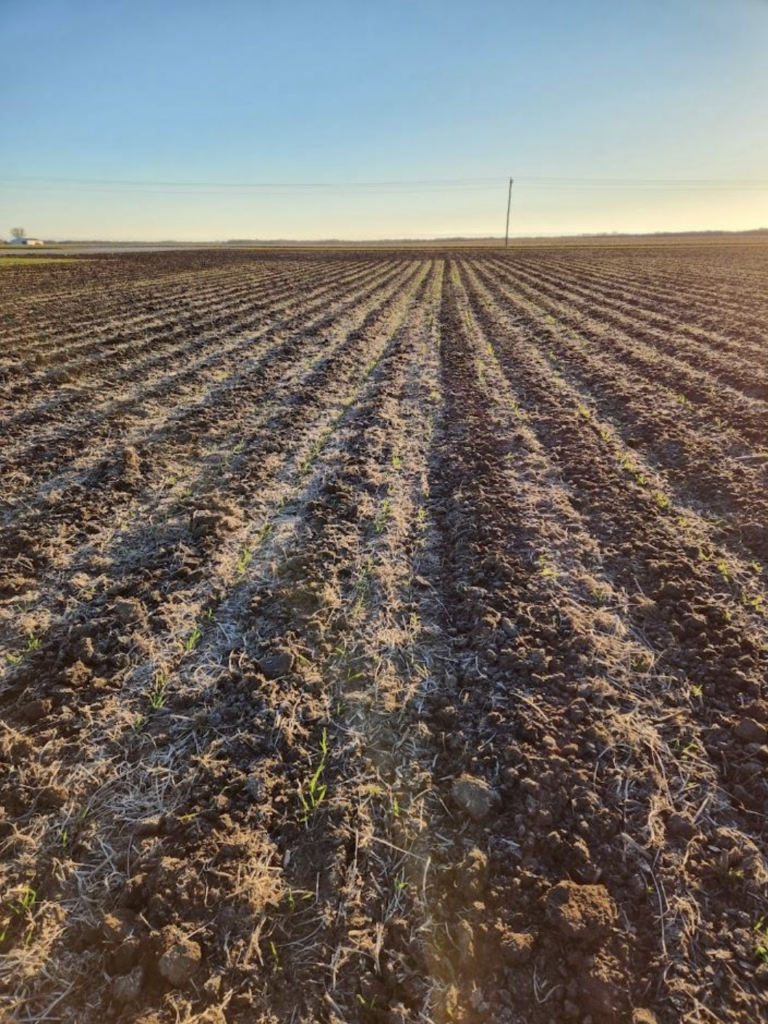
Strips made November 13, 2022 – Barley field in Vermillion County
We are available to talk about the trials we have across the state that are digging deep into cover crop, tillage, and nutrient managed trials. We are excited to walk fields this spring before planting and continue crop updates this spring. Stay tuned!
Contact:
Jim Isermann – jisermann53@gmail.com / 815-257-2276
Abigail Peterson – abigail.peterson@ilsoy.org / 815-973-2478


 and then
and then